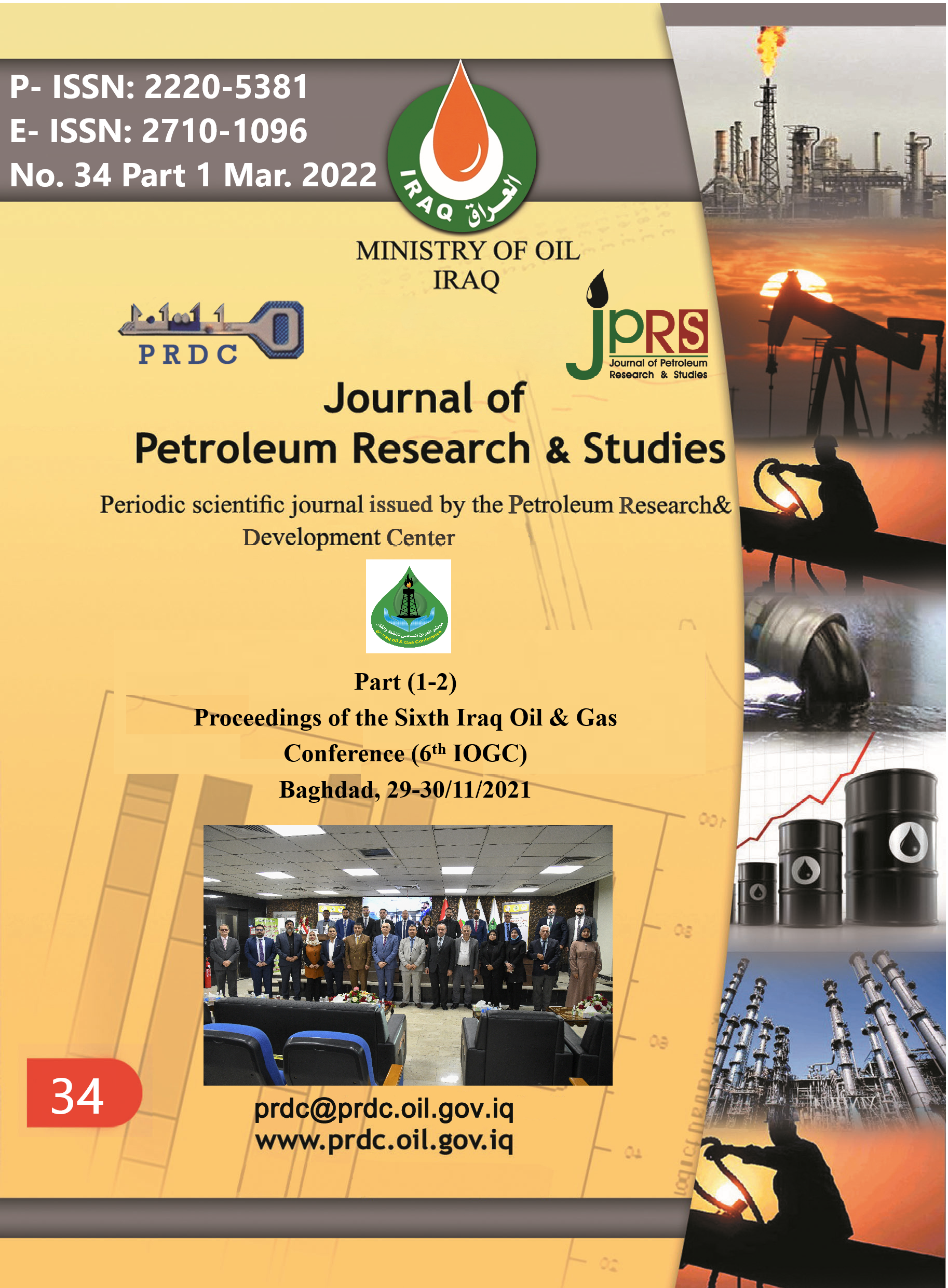An Empirical Correlations to Predict Shear Wave Velocity at Southern Iraq Oilfield
DOI:
https://doi.org/10.52716/jprs.v12i1.586Keywords:
Shear wave, Mechanical properties, Spss, Compressional wave, Geomechanical.Abstract
Geomechanical studies are very important in the development stages of oil fields to solve many problems such as wellbore instability and sand production. However, this study is not complete without the availability of mechanical properties of rocks. These properties estimate from petrophysical logs based on the compressional and shear wave velocities. But the shear wave is often missing from most wells, and the reason might be cost-saving. Therefore, this study aims to find correlations to predict the shear wave velocity of the Mishrif reservoir.
The empirical equations are formed using log data of six wells drilled in the southern Iraq oilfield. The Statistical Package for the Social Sciences (SPSS) software was relied on to find the empirical correlations. Eleven empirical equations have been obtained, but the best are three equations: linear, quadratic, and cubic because they give the highest value of R2 = 0.924. Also, these three equations (linear, quadratic, and cubic) have been tested for sensitivity, and the most stable equation was quadratic. Moreover, the equations examined using four wells measured shear wave velocity, and the results were very reliable. Finally, the equations were tested by estimate the shear wave in wells where there are no measured data, then calculating the mechanical rock properties, predicting wellbore instability, and comparing the breakout with the caliper, and the result was excellent. This study is an excellent solution for shear wave estimation in wells where there are no measurements
References
Singh R, Kainthola A, Singh T. Estimation of elastic constant of rocks using an ANFIS approach. Applied Soft Computing. 2012;12(1):40-5.
Allawi RH, Al-Jawad MS. Wellbore instability management using geomechanical modeling and wellbore stability analysis for Zubair shale formation in Southern Iraq. Journal of Petroleum Exploration and Production Technology. 2021:1-16.
Ameen MS, Smart BG, Somerville JM, Hammilton S, Naji NA. Predicting rock mechanical properties of carbonates from wireline logs (A case study: Arab-D reservoir, Ghawar field, Saudi Arabia). Marine and Petroleum Geology. 2009;26(4):430-44.
Boonen P, Bean C, Tepper R, Deady R, editors. Important Implications From A Comparison Of Lwd And Wireline Acoustic Data From A Gulf Of Mexico Well. SPWLA 39th Annual Logging Symposium; 1998: OnePetro.
Eissa E, Kazi A. Relation between static and dynamic Young's moduli of rocks. International Journal of Rock Mechanics and Mining & Geomechanics Abstracts. 1988;25(6).
Rasouli V, Pallikathekathil ZJ, Mawuli E. The influence of perturbed stresses near faults on drilling strategy: a case study in Blacktip field, North Australia. Journal of Petroleum Science and Engineering. 2011;76(1-2):37-50.
Nader AF, AL-Saad HF, Jaber KD, Madhi A, Swadi A-M. Mathematical models describing the effect of overburden pressure on porosity and permeability of reservoir rocks of Upper shale member for South Rumelia and upper sandston (3 rd pay) member for Zubair oil field. Journal of Petroleum Research & Studies. 2021(31).
Wantland D, Laroque G, Bollo M, Dickey D, Goodman R. Geophysical measurements of rock properties in situ. 1964.
Carroll RD, editor The determination of the acoustic parameters of volcanic rocks from compressional velocity measurements. International Journal of Rock Mechanics and Mining Sciences & Geomechanics Abstracts; 1969: Elsevier.
Birch F. The velocity of compressional waves in rocks to 10 kilobars: Journal of Geophysical Research. 1960;65(4):1083-102.
Christensen NI. Compressional wave velocities in possible mantle rocks to pressures of 30 kilobars. Journal of Geophysical Research. 1974;79(2):407-12.
Kern H. P-and S-wave velocities in crustal and mantle rocks under the simultaneous action of high confining pressure and high temperature and the effect of the rock microstructure. 1982.
Burlini L, Fountain DM. Seismic anisotropy of metapelites from the Ivrea-Verbano zone and Serie dei Laghi (northern Italy). Physics of the Earth and Planetary Interiors. 1993;78(3-4):301-17.
Ji S, Salisbury MH. Shear-wave velocities, anisotropy and splitting in high-grade mylonites. Tectonophysics. 1993;221(3-4):453-73.
Watanabe T, Kasami H, Ohshima S. Compressional and shear wave velocities of serpentinized peridotites up to 200 MPa. Earth, planets and space. 2007;59(4):233-44.
Ji S, Wang Q, Xia B. Handbook of seismic properties of minerals, rocks and ores: Presses inter Polytechnique; 2002.
Castagna JP, Backus MM. Offset-dependent reflectivity—Theory and practice of AVO analysis: Society of Exploration Geophysicists; 1993.
Brocher TM. Empirical relations between elastic wavespeeds and density in the Earth's crust. Bulletin of the seismological Society of America. 2005;95(6):2081-92.
Brocher TM. Key elements of regional seismic velocity models for long period ground motion simulations. Journal of Seismology. 2008;12(2):217-21.
Yasar E, Erdogan Y. Correlating sound velocity with the density, compressive strength and Young's modulus of carbonate rocks. International Journal of Rock Mechanics and Mining Sciences. 2004;41(5):871-5.
Sirles PC, Viksne A. Site-specific shear wave velocity determinations for geotechnical engineering applications. Geotechnical and enviromental geophysics. 1990;3:121-31.
Downloads
Published
How to Cite
Issue
Section
License
Copyright (c) 2022 Raed H. Allawi, Mohammed S. Al-Jawad

This work is licensed under a Creative Commons Attribution 4.0 International License.














